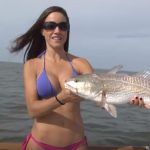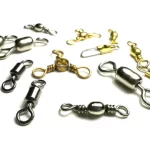Ice fishing for northern pike is an exciting way to break the monotony of winter and connect with the outdoors. These toothy predators are a favorite among anglers due to their active feeding habits, even in the coldest months. Whether using tip-ups, jigging, or even spearing, targeting pike on hardwater promises action-packed adventures.
Locating Northern Pike Under the Ice
Finding pike is often more challenging than catching them. Early in the ice fishing season, shallow weedy areas are prime spots. Depths between four and six feet are ideal, as pike patrol these areas in search of prey. Weed edges, underwater humps, ridges, and saddles often attract baitfish, making them hotspots for pike activity.
As winter progresses, pike often move to deeper waters. Large lakes like Lake of the Woods or Lake Winnebago might hold pike in depths of 30 to 50 feet during midwinter. Electronics, such as fish finders, can simplify locating pike in these deeper areas. For those without electronics, setting tip-ups at varying depths is a practical method to determine where fish are holding.
Late in the season, as the ice begins to thaw, pike often return to shallower areas, preparing for spawning. Focus efforts in these zones to take advantage of their increased activity during late ice.

Essential Gear for Pike Ice Fishing
The type of gear required depends on the method of fishing being used. For jigging, a medium to heavy-action ice rod paired with a spinning reel spooled with 20-pound braided line is recommended. Braided line offers strength and abrasion resistance, essential for handling large pike and preventing break-offs against sharp ice edges.
Due to pike’s sharp teeth, a short wire or heavy fluorocarbon leader is crucial to avoid cut lines. Fluorocarbon leaders are particularly useful in clear or high-pressure lakes, where fish might be more cautious.
Quick-strike rigs are excellent for rod setups, allowing live or dead bait to remain suspended while providing a hands-on experience when a fish bites. For those using tip-ups, the setup differs slightly. Tip-ups suspend bait at a set depth, with a flag signaling a strike. Hand-lining the fish adds an element of excitement to the process.
Spearing is another unique and rewarding method for targeting pike. This technique requires specialized equipment, including a dark house shanty to block light, a chainsaw to cut large holes in the ice, and a pike spear. A decoy, either handmade or commercially purchased, is used to lure pike into range. Though more challenging, spearing offers an exhilarating way to ice fish.
Choosing the Right Baits and Lures
Live bait is often the most effective option for pike. Large shiners, minnows, and suckers, rigged with treble hooks through the back near the dorsal fin, are excellent choices. Tip-ups are especially effective for presenting live bait, but dead baits can also yield results. Pike are opportunistic feeders and often strike scavenged offerings. Enhancing dead bait with dye or flashy blades can make it more appealing.
When using a rod, consider jigs tipped with minnows, in-line spinnerbaits, or spoons like the classic red-and-white Dardevle. These lures mimic baitfish and can attract pike with their flash and vibration. Rapala jigging raps or slab raps in bright colors are also reliable choices. Matching lure colors to natural prey, such as perch or bluegill, often produces better results.
Maximizing Success with Key Tips
During midwinter, if pike become elusive in shallower areas, explore deeper waters. This behavior shift doesn’t signal a feeding slowdown; rather, pike adjust their locations based on baitfish movements. Electronics and underwater cameras are invaluable tools for tracking these movements and observing strikes in real-time.
Ice fishing for pike offers a unique thrill that rivals traditional casting methods in other seasons. From the moment the tip-up flag pops to the instant a big fish takes a lure, the excitement is unmatched. It’s a perfect way to embrace the season and create lasting memories on the ice.
This winter, try targeting northern pike on hardwater. With the right approach and gear, these fierce predators might become the highlight of the cold season, making long winter days both bearable and rewarding.
Image/Source: WOS





